

The major press releases about us that have been reported by other mainstream media. If you want to browse more detailed news, you can click on the corresponding media name.
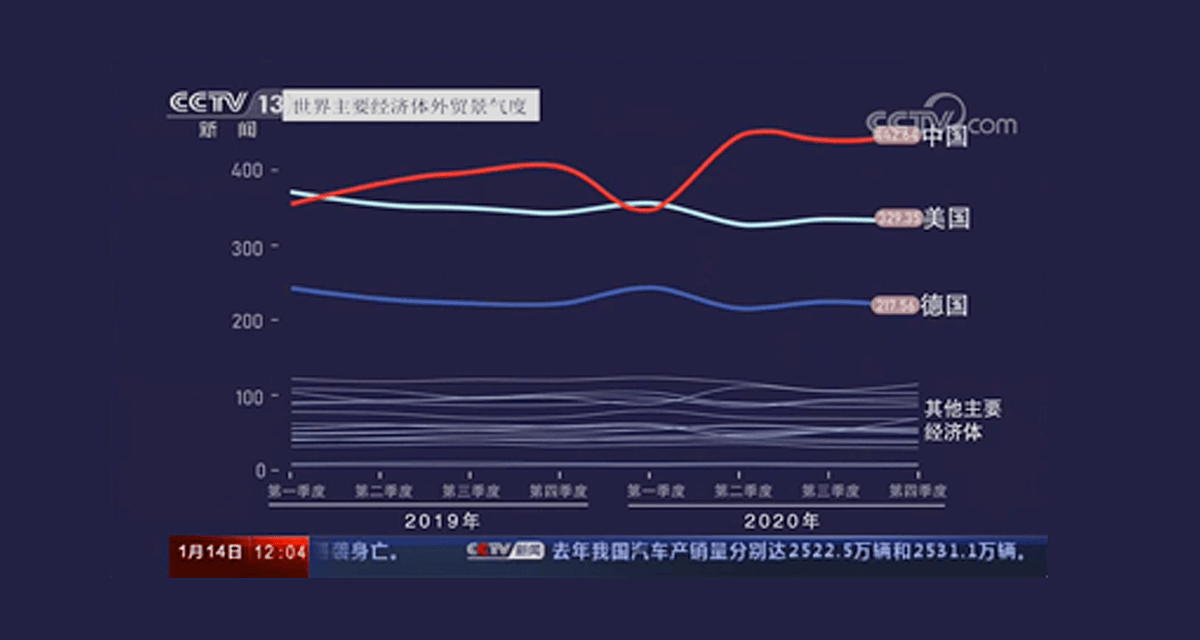
Dalian Infobank also provides trade statistics for official media such as People's Daily and Economic Daily. As a supplier of trade data to China's Ministry of Commerce and General Administration of Customs, Dalian Infobank serves the government or enterprises with accurate trade data, and is the only organization in China that can collect, organize or publish trade statistics in line with UN statistics or WTO statistics.
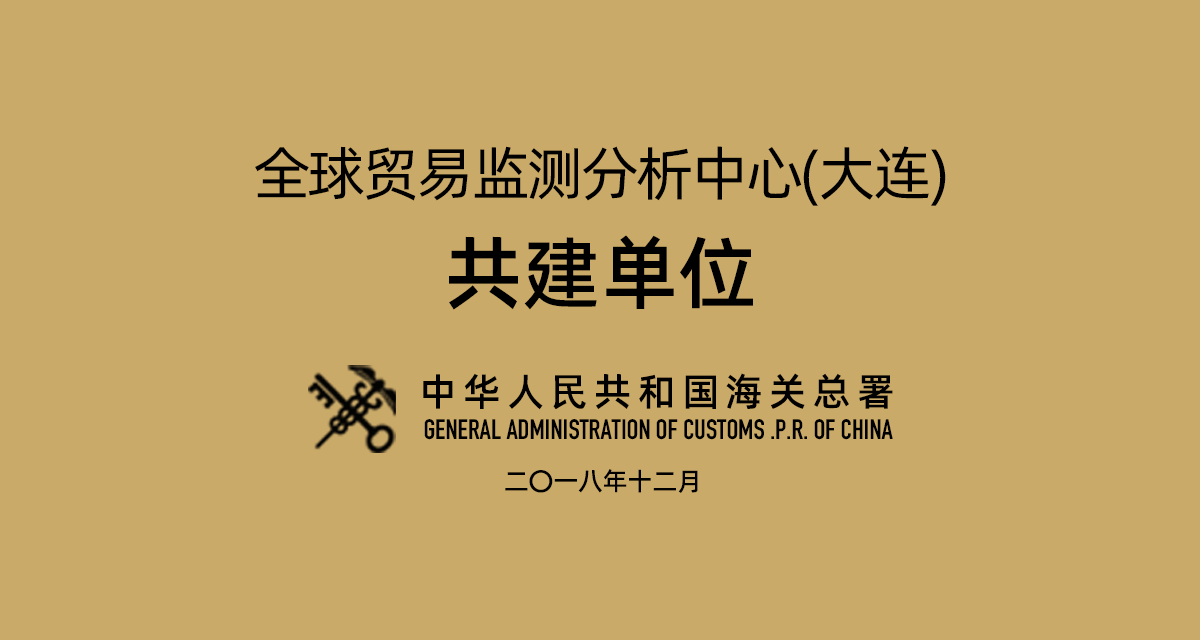
As a representative private high-tech enterprise in Dalian, Dalian Infobank on collecting global trade data and providing big data analysis and think-tank services. After 14 years, it has grown into an internationally renowned and globally influential leading foreign trade big data enterprise, which is in the leading position internationally in terms of data resources, number of customers, service projects and modes, etc. The "Global Trade Flow" big data platform has the world's largest goods trade database, covering 191 countries and regions, accounting for 97% of the total global trade according to the UN caliber and 99% according to the WTO caliber, and is widely used in e-commerce services.
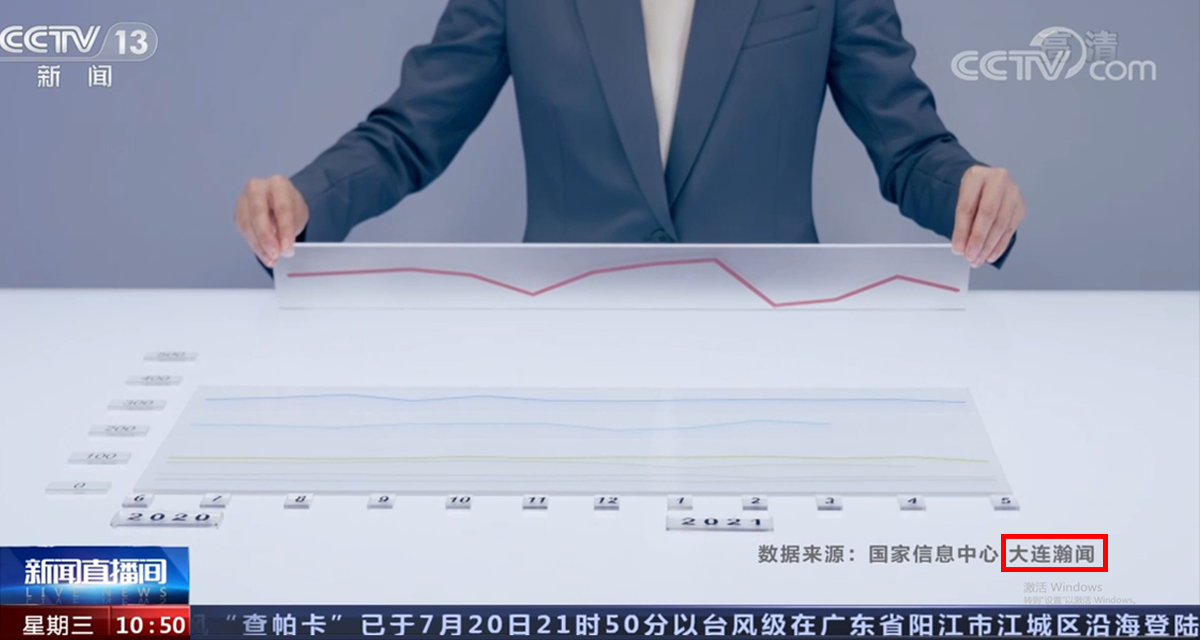
The Big Data of the National Information Center(Trade Data from Sinoimex) comprehensively calculates the foreign trade prosperity index of major countries and regions in the world. According to the data, China’s foreign trade prosperity index has been ranked first in the first half of 2021, far higher than the United States, Germany, Japan and other countries. Major trading country. Beneath the prosperity index is a busy scene of the smooth flow of cargo in major ports and the continuous growth of air and rail freight volumes. This shows that China's economy is picking up rapidly, and China has once again become an investment destination favored by foreign investors.

Based on global trade data, Zhuang Tianyu, chief researcher of Dalian Infobank . analyzes and predicts China's foreign trade's international environment, its own trends and structural characteristics, and releases a briefing on China's foreign trade big data analysis. The brief argues that overall, since 2023, the momentum of world economic recovery is unstable, external demand is weakening, China's foreign trade has withstood the pressure, the scale is stable, the share is stable, and the important position in the global industrial chain supply chain has not changed.

Mr. Zhang Xiaotao, Dean of the School of International Economics and Trade of the Central University of Finance and Economics, and Mr. Tong Youjun, Chairman of Dalian Infobank . said that, in the face of the fast-changing economic and trade situation, the research and judgment in the field of economic and trade is different from academic research, which requires timely data on the one hand, and research and judgment on the trend on the other hand, which is indispensable to the support of the high-level research team and the high-frequency trade data.

On September 20, Northeast Asia Lecture Hall (the 18th) and "Alumni Talk" (the 11th) were successfully held in the International Conference Hall of Zhiyuan Building. Mr. Tong Youjun, member of the Standing Committee of the Chinese People's Political Consultative Conference of Dalian Municipality, Chairman of Dalian Infobank , and alumnus of the School of International Economics and Trade (former Department of Foreign Trade) of the University, attended the activity and made a special report; Mr. He Fang, Director of Alumni Work Office of Northeast University of Finance and Economics and Vice-President of Alumni General Association; and Mr. Zhou Xueren, Director of Scientific Research Office of NUFE attended the activity and made a speech. More than 100 people from all walks of life, including participants of the training course for volunteers of the Western Program of Shihezi Youth League Committee, teachers and students of the University, participated in the activity. The event was hosted by Shi Jinfang, President of Northeast Asia Economic Research Institute.

On September 16, "Seminar on the Spirit of the Second Edition of the Digital Trade Measurement Manual and the Prospects of China's Digital Trade Statistics", organized by the Academic Committee of the China Society for Foreign Economic and Trade Statistics and hosted by the Institute of National Accounting Research of Beijing Normal University, was held at Beijing Normal University.

Organized by China Chamber of Commerce for Import and Export of Medical and Health Products, China Chamber of Commerce for Import and Export of Light Industry and Handicrafts, China Chamber of Commerce for Import and Export of Foodstuffs, Native Produce and Livestock, and constructed by Dalian Infobank .
As China's first commercial organization that collects global goods trade import and export data and provides big data analysis and a national public service platform serving small and medium-sized enterprises, Tong You, chairman of Dalian Infobank , said that private enterprises are actually holding back their energy to develop.
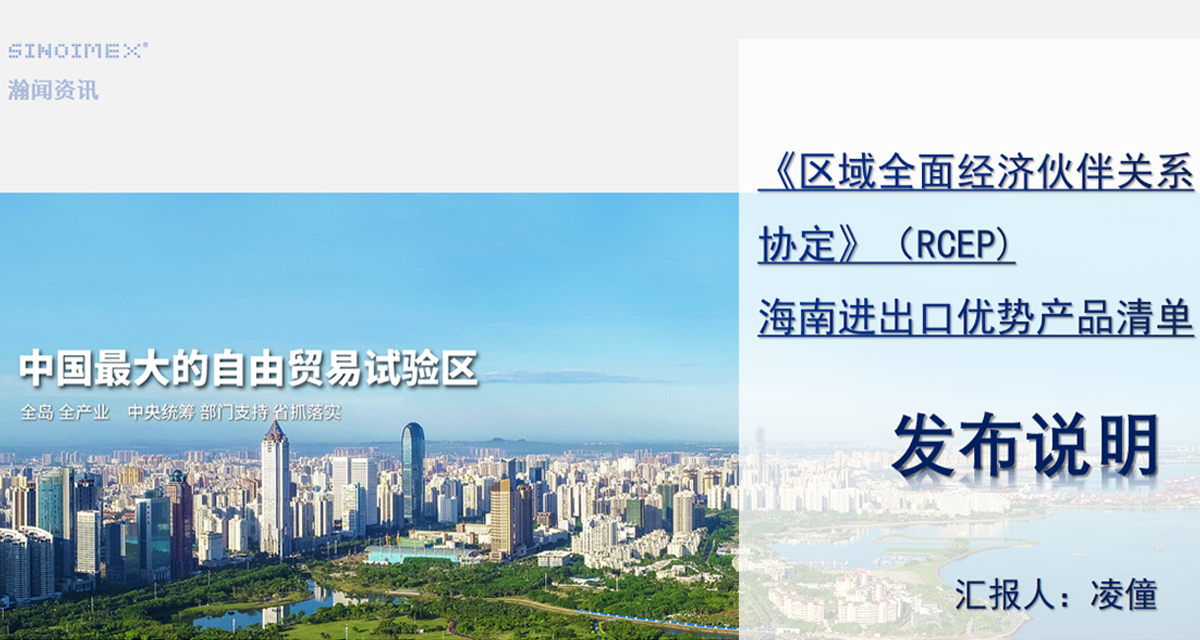
Dalian Infobank general manager Tong Youjun said that it has achieved rich results and cases in its services to private enterprises. A private enterprise in the field of fine chemicals in our city has achieved a multi-million yuan growth in business revenue within one year with the help of Dalian Hanwyn Big Data Public Service Platform.

As the compiler of Hainan Province RCEP Import and Export Advantage List, i.e. Hainan's Export Advantage List under RCEP, Hainan's Import Advantage List under RCEP and Hainan's Free Trade Port "Zero Tariff" Advantage List, Dalian Infobank was invited to participate in the Hainan Bureau of Commerce's The "Three Lists" were released and explained at the conference, which was reported by Xinhua News , Hainan Daily and many other media.
In an interview, the General Manager of HMI said:"Dalian Infobank pushes enterprises with real purchasing records in the past including contact information directly to enterprises through RCEP public service platform, and selects high-quality enterprises with high import volume and regular import to provide Liaoning enterprise services."
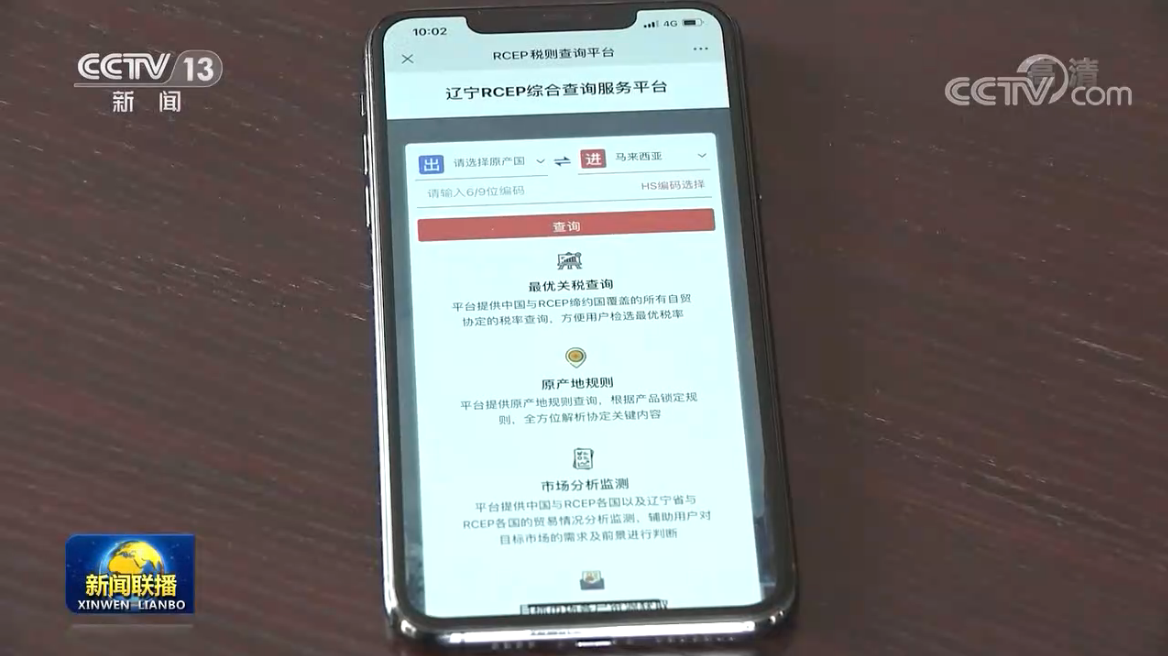
With its in-depth research on Regional Comprehensive Economic Partnership Agreement (RCEP) and a series of recent policies and measures to stabilize foreign investment and foreign trade in Liaoning Province, Dalian Infobank has developed and hosted the Liaoning RCEP Integrated Inquiry Service Platform. The platform has been officially launched and reported by CCTV news broadcast.
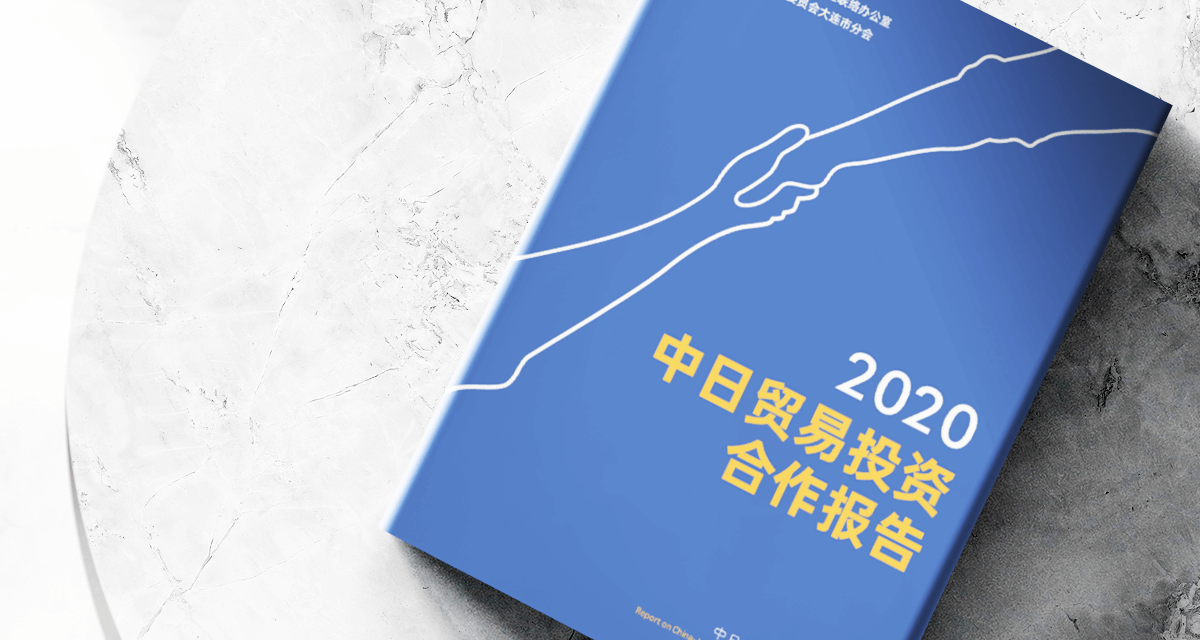
Dalian Infobank 's annual series of reports (compiled for 4 consecutive years) "China-Japan Trade and Investment Cooperation Report 2020" was released in Dalian on September 25, 2020. The report points out that, in 2019, China and Japan increased efforts to stabilize foreign trade and strengthen cooperation in mutual economic and trade relations, and with the joint efforts of both sides, the momentum of China-Japan trade cooperation rebounded was consolidated. Japan has been China's second largest goods trading partner for 4 consecutive years and China has been Japan's top goods trading partner for 12 consecutive years. The report points out that foreign-funded enterprises still play an important role in Sino-Japanese bilateral trade cooperation, but private enterprises' exports to Japan are growing against the trend.
Download
The Ministry of Commerce of the People's Republic of China announced the list of the first 60 "online and offline integration and development of digital business enterprises" (hereinafter referred to as "digital business enterprises"), Ali, Jingdong, Xiaomi, Jindo, Suning Tesco and other e-commerce giants and Meituan, Netease, Ctrip and other Internet companies were included. Hanwyn Information is the only company in Dalian selected to be on the list.

The use of big data technology to strengthen the collection, analysis, publication and dissemination of information on economic and trade cooperation of "One Belt, One Road" countries is an important basic task to promote the exchange of economic and trade information, help broaden the economic and trade fields, optimize the economic and trade structure, and explore new growth points in economic and trade. In order to further play the supporting role of big data in "One Belt, One Road" construction, Dalian Infobank prepared the “One Belt, One Road Trade and Investment Big Data Report, 2019” and published it again, after finishing the “One Belt, One Road Trade Cooperation Big Data Report, 2017” and the “One Belt, One Road Trade Cooperation Big Data Report, 2018”. The report involves 64 countries along the "Belt and Road", 31 provinces, autonomous regions and cities in China, as well as the EU, the United States, Japan, three major economies; and it also contains more than 8,500 kinds of products and the underlying data amounted to 320 million, which are shown in the form of appendices, so as to query. The analysis is rich in dimensions, covering both trade and investment, from the overall global level to the product level, and the commodity classification is refined to HS6 codes, providing more detailed import and export commodity data for all sectors concerned.
Download
The report is organized by the Liaison Office of China-Japan Business Council and Dalian Sub-Council of China Council for the Promotion of International Trade, and compiled by Dalian Infobank Co. Ltd. The report covers bilateral investment, cooperation indices, industrial policies and other aspects. The report focuses on the achievements of trade and investment between China and Japan, and aims to provide reference and services for local governments, trade institutions and enterprises in China and Japan to carry out economic and trade activities. Data show that the scale of China-Japan trade in goods continues to rebound, with bilateral trade reaching $327.7 billion last year, an 8.1% increase in trade volume over the previous year. Shanghai, Jiangsu, Guangdong, Beijing and Shandong ranked among the top five in China's provincial and municipal cooperation index with Japan. Jiangsu has the highest export value to Japan and Hunan has the largest increase in export; Guangdong has the highest import value from Japan and Hebei has the largest increase in import. Among the Japanese prefectures, Osaka prefecture has the highest export value to China, and Tokyo has the highest import value from China.
Download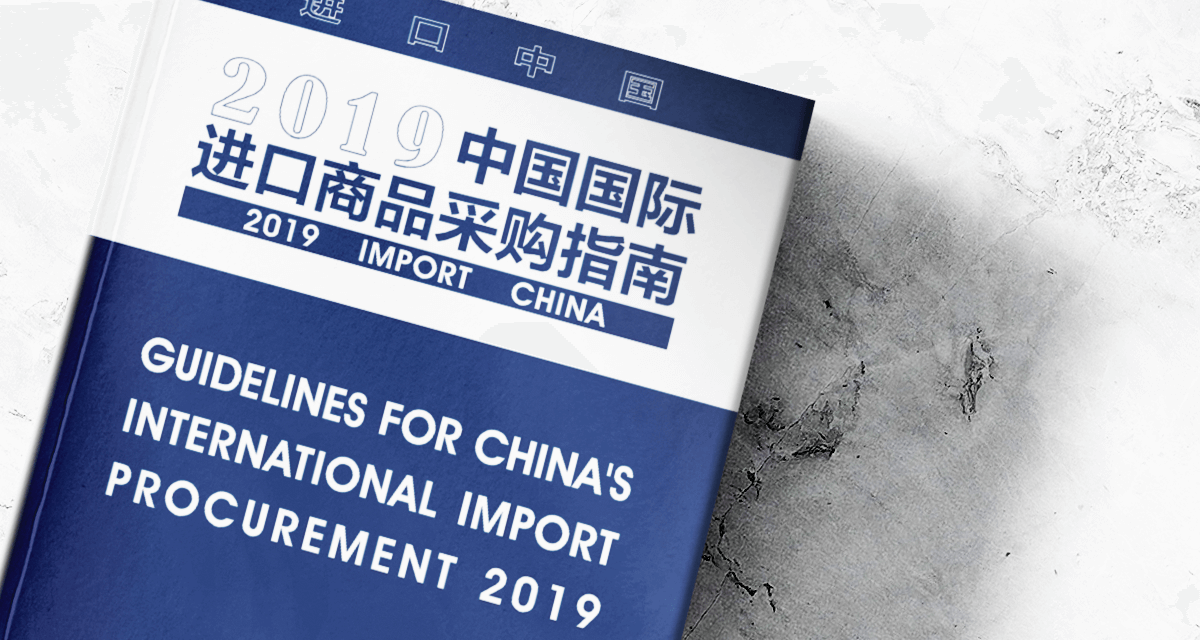
“The China Import Roadmap, 2019”(written by Dalian Infobank) provides detailed procurement guidelines for domestic procurement enterprises from all provinces and municipalities participating in the 2nd China International Import Expo. It is divided into five parts, including national markets, industry commodities, importing provinces and cities, import source diversification, and market research, in which the import source diversification section presents the top ranking exporters in the top export categories of the major industrial countries in Europe (Germany, France, Britain, Italy), and at the same time, according to the export characteristics of Korea and Indonesia, list some enterprises with high transaction frequency of major export commodities from both countries, help domestic purchasing enterprises to expand import channels, and improve the quality and efficiency of imports. Market research chapter, preliminary market research was conducted on the imported vehicle market and several types of commodity industries with high foreign dependence in the first half of 2019, and through data analysis, trying to discover these industries in the import scale, price, growth rate, structure, source changes and their reasons.
Download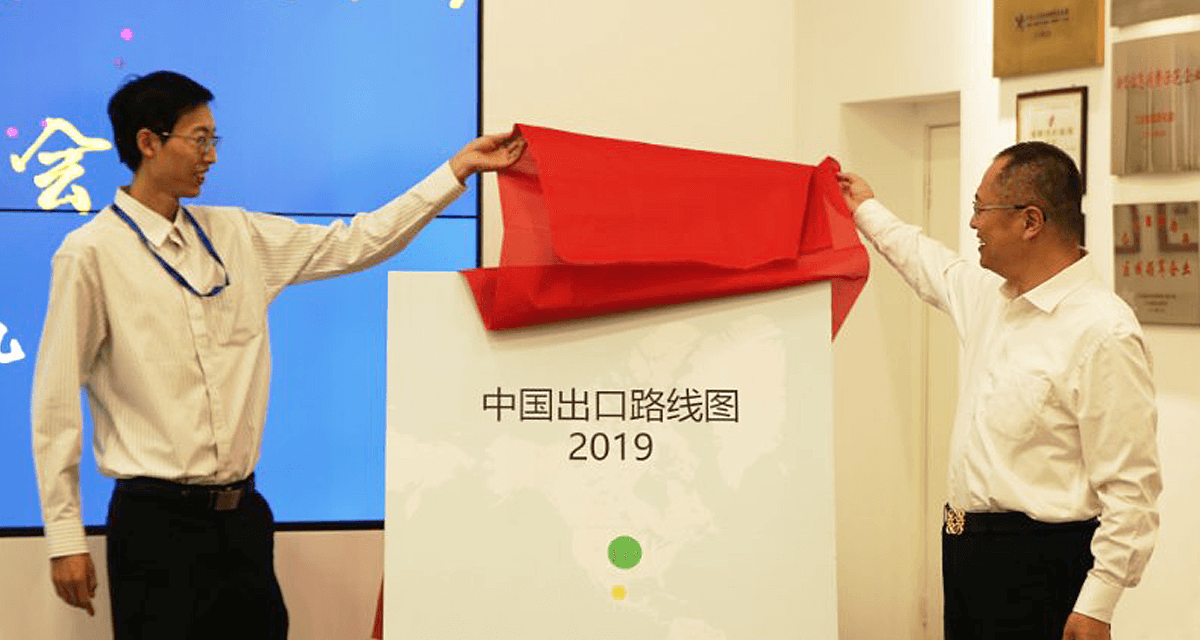
Relying on “Global Trade Flow” and “Global Trade Monitor” developed by Dalian Infobank, “China Export Roadmap” provides a comprehensive and in-depth analysis of the economic growth rate, major import commodities, import sources, tariff levels to China and trade facilitation indicators of potential markets such as South Korea, the Netherlands, Mexico, India and Vietnam. This is the third consecutive year that Dalian Infobank has used foreign trade big data and mining technology to compile this public service product. Dalian Infobank Co., Ltd. is the first commercial organization in China to collect, organize and analyze trade statistics on goods from major trading countries. The “Roadmap” is a high-quality public product that serves governments, enterprises, foreign trade professionals and the public.
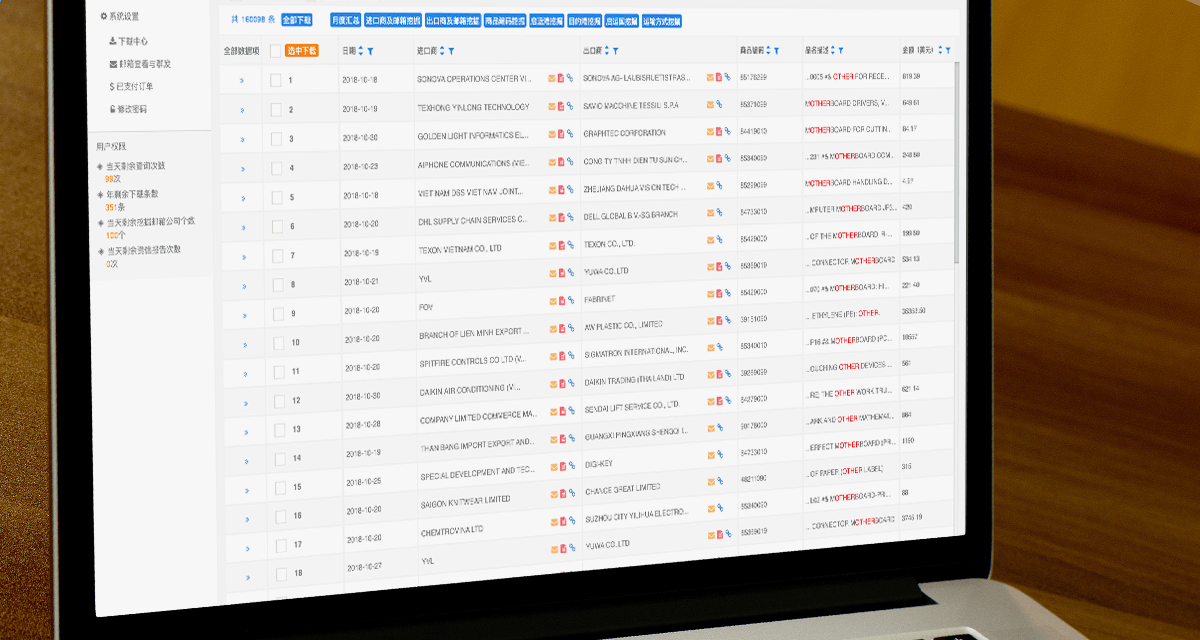
Foreign trade between countries along the “Belt and Road” and China is growing rapidly, with the growth rate of imports exceeding the growth rate of exports for the first time. In 2017, China's total import and export with countries along the ``Belt and Road'' was US$1,403.2 billion, up 13.4% year-on-year, 5.9 percentage points higher than China's overall foreign trade growth rate and accounting for 36.2% of the country's total foreign trade. In terms of countries, China's trade with Asia and Oceania accounted for more than 50% of the total, with China's trade with Central Asia growing the fastest. Republic of Korea (ROK), Vietnam, Malaysia, India and Russia rank in the top five by foreign trade volume with China. Data source: Dalian Infobank
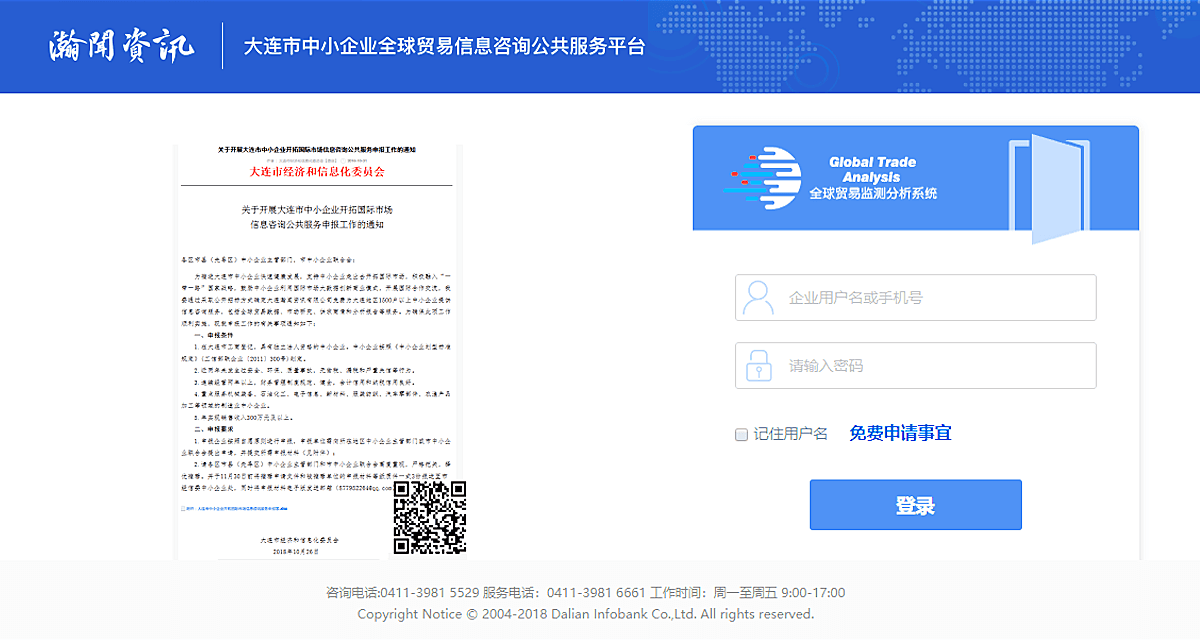
In order to promote the rapid and healthy development of SMEs in Dalian, support SMEs to go out and explore the international market, actively integrate into the "Belt and Road", encourage SMEs to make use of big data in the international market to innovate business models and carry out international cooperation and exchange, Dalian Municipal Economic and Information Commission has identified Dalian Infobank Co., Ltd. to provide free information consulting and data retrieval services for more than 1500 SMEs in Dalian. The "Global Trade Analysis (GTA)" developed by Dalian Infobank Co., Ltd. collects data of customs declaration and bill of lading of various countries to form a huge trade database for enterprises to inquire online independently. The information covers 172 trading countries and regions, including 93% of the world's foreign trade details, the earliest data can be traced back to 1999. 6000G large database resources can help enterprises locate the more profitable target markets and understand the changes in market demand through the system automatically generated graphical analysis, which also improve the international competitiveness of their products.

“China Import Roadmap, 2018" jointly compiled by Dalian Infobank and Liaoning (Dalian) Institute of Free Trade Zone, Dongbei University of Finance and Economics. To better serve the first China International Import Expo to be held in Shanghai on November 5, The “Roadmap" research team used big data technology to call more than 8,000 categories, about 120 million basic trade data, for consumer goods, major technical equipment and key components (raw materials), and agricultural products, selected the domestic shortage, urgent and necessary imports of 30 categories of goods. Multi-angle analysis is conducted from the main import sources, import amounts, domestic import destinations, and global trade flows of the commodities. By calculating basic indicators such as amount, proportion, growth rate and import intensity, we try to discover new high-quality import sources, more reasonable import scales and more convenient import methods.
Download
The "China-Japan Trade and Investment Cooperation Report (2018)" was released in Dalian, covering trade in goods, trade in services, bilateral investment, cooperation indices, industrial policies, etc., focusing on the results achieved in trade and investment between China and Japan, and aims to provide reference and services for local governments, trade institutions and enterprises in China and Japan to carry out economic and trade activities. The report was prepared by the Liaison Office of China-Japan Business Council and Dalian Sub-Council of China Council for the Promotion of International Trade, and jointly undertaken by Dalian Infobank Co., Ltd. and the Institute of Foreign Trade Data of the National Information Center "One Belt, One Road".
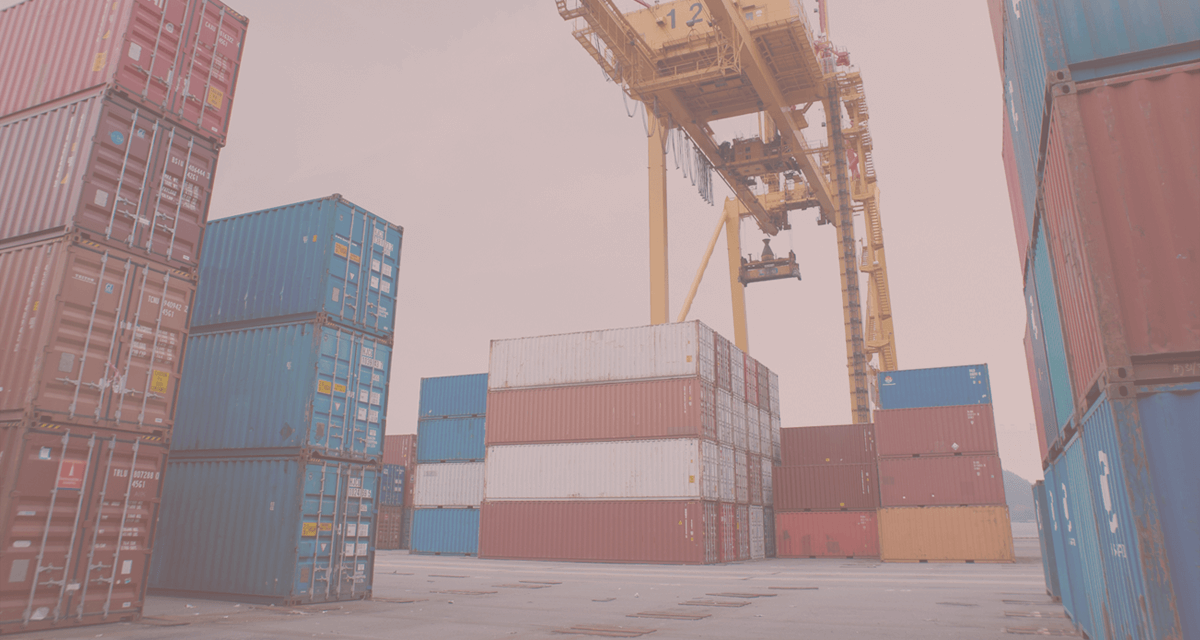
Dalian Infobank Co., Ltd., a domestic think tank, exclusively disclosed the report of "Trade War Commodity Code Conversion between China and the United States" yesterday, which is the first time a domestic think tank discloses the results of commodity code conversion between China and the United States. The report is aimed at helping domestic exporters to make an objective and accurate analysis of the trade friction between China and the United States by examining the big data after the code conversion from three dimensions: the impact of the trade war on the mainland provinces, product segmentation categories and export substitution countries. The report shows that the first 25% tariffs imposed by the United States on China's 818 products (U.S. HTS code 8 bits), after conversion to Chinese HS code 8 bits, involving a total of 1053 products. 2017 exports of more than 100 billion U.S. dollars of Chinese provinces and cities, the combined export value of products affected by the tax increase accounted for nearly 80% of the country, Guangdong, Jiangsu, Zhejiang, Shanghai, Shandong exports to the United States are affected more obviously. Guangdong and Jiangsu provinces affected by the tax increase of 1053 products, exports to the United States last year reached $13.3 billion and $13 billion, respectively, much higher than the other three provinces and cities.

At present, Dalian is actively promoting the application of e-commerce in industry, agriculture, commerce, tourism and other fields, and a large number of e-commerce enterprises with innovation, characteristics and strong sustainable development ability have emerged. Dalian Infobank is one of the most representative enterprises. In the list announced by the Ministry of Commerce recently, Dalian Infobank Co., Ltd. was also awarded as "2015-2016 National E-commerce Demonstration Enterprise", one of the only two enterprises in the province to be awarded.

The "One Belt, One Road Trade Cooperation Big Data Report, 2018", jointly prepared by the "Belt and Road" Big Data Center of the National Information Center and Dalian Infobank Co., Ltd. The report covers 71 countries along the "Belt and Road" and 31 Chinese provinces/autonomous regions/municipalities, calling on 270 million underlying data from SINOIMEX 's global trade database, involving more than 8,500 basic trade product categories, and presenting all kinds of basic data in the form of appendices. It not only analyzes the overall trade pattern of countries along the Belt and Road, regional and country-specific trade cooperation between China and the Belt and Road, trade cooperation between Chinese provinces, autonomous regions and cities and countries along the Belt and Road, but also further analyzes the commodity structure of China's trade with countries along the Belt and Road and the commodity classification is refined to the HS4 code of the customs commodity code.
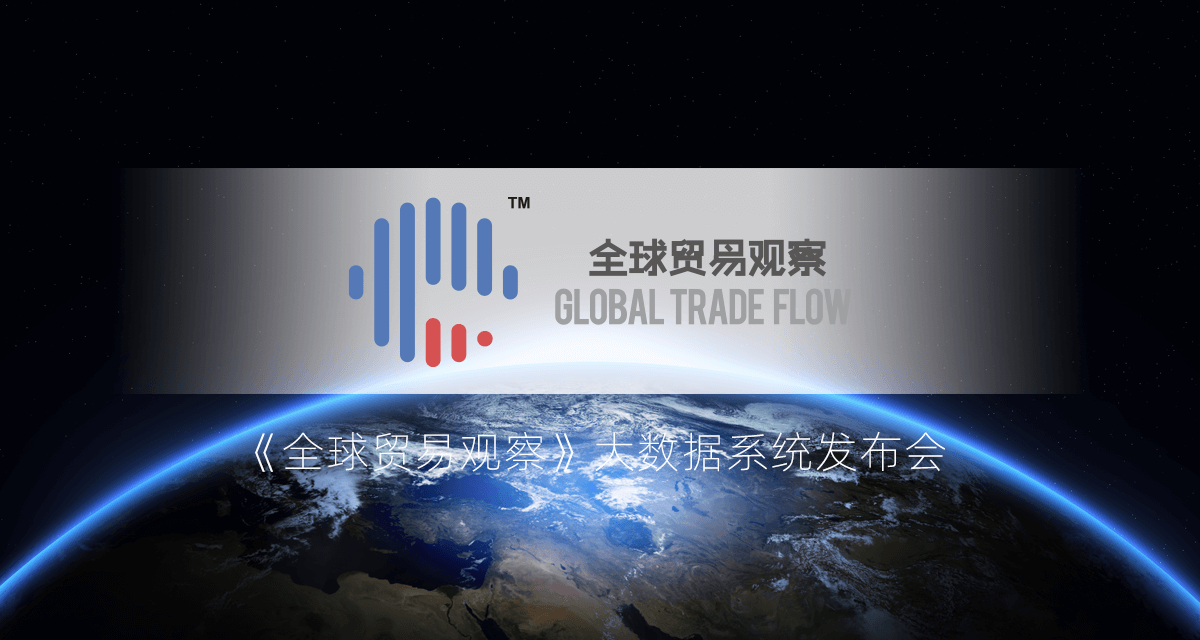
“Global Trade Flow” provides import and export data on trade in goods from 129 countries and regions, covering all major economies in the world, accounting for 93% of total global trade, with data dating back to 1988. The breadth and depth of the data is comparable to the United Nations Commodity Trade Statistics Database, making it "China's first and global benchmark". Tong Youjun, director of the "Belt and Road" Foreign Trade Data Institute of the National Information Center, introduced that all the data used in “Global Trade Flow” are provided by SINOIMEX, and some of the data played a huge role in last year's "Belt and Road" summit and BRICS summit.

This is the first index for food import demand along the "Belt and Road" in China, which has positive guiding significance for deepening food economic and trade cooperation and enhancing industrial investment among countries along the "Belt and Road". The index contains more than 1 million pieces of data mainly come from the global trade database of Dalian Infobank Co., Ltd., which is a company approved by the National Bureau of Statistics with a license to conduct foreign-related surveys and is the first commercial organization in China to collect and analyze global trade data on imports and exports of goods, and has now built the world's largest trade database.

The report was prepared by the Liaison Office of China-Japan Business Council and Dalian Sub-Council of China Council for the Promotion of International Trade, and jointly undertaken by Dalian Infobank Co., Ltd. and the Institute of Foreign Trade Data of the National Information Center "One Belt, One Road". Annual Report focusing on Sino-Japanese trade and investment cooperation, the report consists of eight parts: General, Index, Trade in Goods, Trade in Services, Investment, Enterprises, Regions, and Suggestions, etc. It conducts research from two dimensions: Chinese provinces, autonomous regions and cities, and Japan, aiming to show the achievements of Sino-Japanese trade and investment cooperation in the past year. For the first time, the report released the ranking of economic and trade cooperation index between China's provinces, autonomous regions and cities and Japan, which aims to construct a comprehensive index system and scientifically evaluate and measure the progress of cooperation between each region and Japan.

Tong Youjun, Vice President of China Foreign Economic and Trade Statistics Association and Chairman of Dalian Infobank Co., Ltd., released and interpreted the “Research Report on China's Top 500 Foreign Trade Enterprises (2017)”. The report was prepared by Dalian Infobank Co., Ltd. and Dalian Big Data Research Institute. The report takes the trade volume and the number of enterprises as the entry point, and analyzes the status and role of China's top 500 foreign trade enterprises in foreign trade from multiple dimensions, such as trade contribution, enterprise nature, trade commodities, regional distribution, and the influence of "One Belt, One Road" enterprises. The report shows that in the context of the "Belt and Road" national strategy, China's top 500 foreign trade enterprises have deepened trade and cooperation along the "Belt and Road", achieving a total trade volume of US$118.43 billion in 2016, accounting for 32.1% of China's total trade volume. It plays an extremely important role in the sustainable development of China's foreign trade.

Dalian Infobank Co, which has grown in the zone, has set up one of the world's biggest trade databases, in which data covering 157 countries and regions and dating back to 1988 are stored.The company enables foreign trade businesses to see market trends and precisely target clients by processing big data, having served more than 10,000 enterprises at home and abroad.
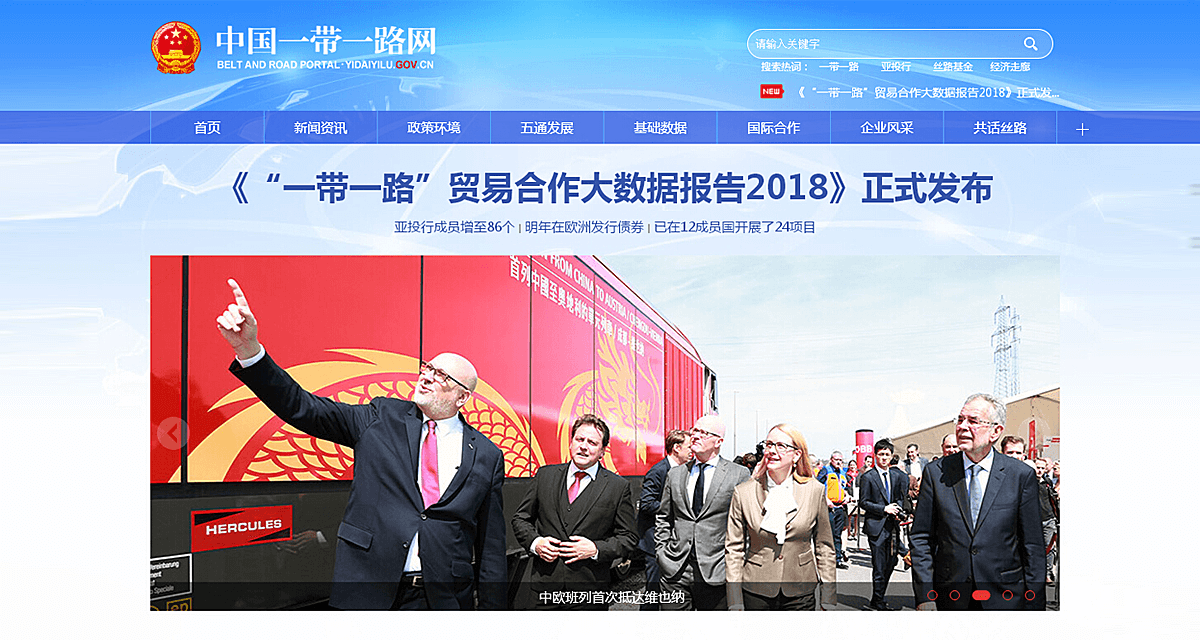
From 2014 to 2016, China's total trade with countries along the route amounted to about RMB 20 trillion, with a growth rate higher than the global average. In 2016, China's total trade with countries along the route amounted to about US$953.59 billion, and its share of China's total foreign trade reached 25.7%, up 0.4 percentage points from 2015. In terms of trade markets, Southeast Asia is the largest export destination and the largest source of imports, with Vietnam surpassing Malaysia to become China's largest trading partner among the countries along the route. Guangdong is one of the largest domestic provinces in terms of trade with the countries along the route, accounting for 20.9% of the country, followed by Jiangsu, Zhejiang and Beijing, all with a proportion higher than 10%. Data source: Dalian Infobank
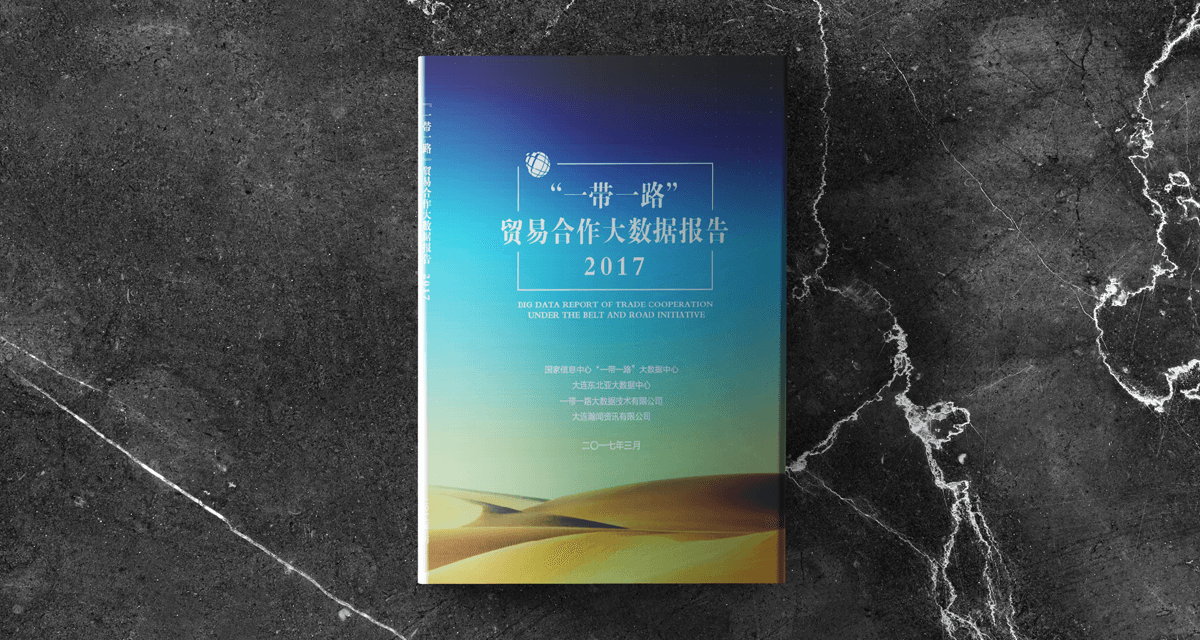
President Xi Jinping pointed out that "'One Belt and One Road' pursues the great benefit of a hundred flowers, not the small benefit of a single branch." Over the past three years, China and the countries along the route to interoperate, complement each other's advantages, share opportunities and meet challenges, the mutually beneficial ties of cooperation are tightening, and the network of win-win partners is being woven. In the context of the lack of momentum in the world economy, the progress of economic cooperation under the "Belt and Road" initiative is undoubtedly a rare bright color. It is worth mentioning that the new industry economy represented by Internet enterprises is also actively laying out and going to the sea side by side, and cross-border e-commerce has seen explosive growth, becoming a new dynamic force that cannot be ignored to drive trade development. Data source: Dalian Infobank

The 'Roadmap' selects 50 important and potential trade partner countries and regions of China to analyze the export economic and trade situation and export opportunities, and presents the basic economic data, trade data, comparison of total import value, and the top 10 imported from the world with pictures and texts. Products and amounts, the top 10 products and amounts imported from China, etc., help you to understand at a glance, obtain and in-depth study of relevant data and information. On this basis, the 'Roadmap' integrates and promotes 349 high-quality export promotion service projects in the national trade promotion system according to countries (regions), including exhibitions, economic and trade groups, forums, seminars, docking negotiations, business platforms, and comprehensive services. There are eight categories of platforms and training, covering agriculture and animal husbandry, industrial manufacturing, intelligent manufacturing, textile and light industry, Internet, service trade, energy and environmental protection, and commercial law and other industries. Organized by: Dalian Infobank
Download
The "One Belt, One Road Trade Cooperation Big Data Report, 2017", the first annual special report using big data methodology to study trade cooperation between China and countries along the "Belt and Road", has been officially released. The report was jointly prepared by the "Belt and Road" Data Center of the National Information Center, Northeast Asia Data Center, Belt and Road Big Data Technology Company and Dalian Infobank Co., Ltd. The report is based on the analysis of the current situation and trend prediction of the "Belt and Road" trade cooperation, and collects and calls more than 8,000 types and 120 million pieces of basic data of global import and export trade. The analysis is based on a variety of big data analysis methods, such as data mining, cluster analysis, data visualization, etc., and provides a comprehensive and objective analysis of the overall pattern of "Belt and Road" trade cooperation in 2016, as well as the current situation and development status of trade cooperation between China and 64 countries along the route, and between 31 provinces and cities in mainland China, in terms of bilateral trade volume, trade commodities, trade subjects, trade modes, and cooperation patterns, etc.

This report, jointly completed by the Import and Export Monitoring and Early Warning Group of the Statistics Department of the General Administration of Customs and the big data agency Dalian Infobank Co., Ltd., provides a comprehensive monitoring and analysis of the foreign trade situation of cities above the prefectural and municipal levels in China (excluding cities in the independent customs territory of Hong Kong, Macao and Taiwan), starting from the five dimensions of trade level, structure, efficiency, development and potential. It is worth noting that there are some industries with comparative advantages in China's foreign trade, the most typical ones is the steel industry, which have strong competitiveness in the international market. Expanding trade exports and China's production capacity are complementary to each other, and it is also feasible to solve the overcapacity of certain industries in China through the international market.